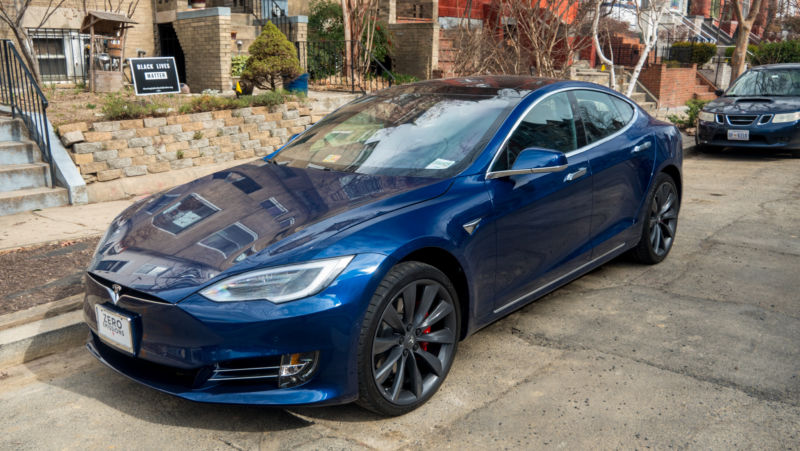
Tesla has begun rolling out a new version of its software, version 2018.21.9, that is stricter about requiring drivers to keep their hands on the wheel.
Previous versions of the software allowed drivers to take their hands off the wheel for one to two minutes before reminding them to put them back on the wheel—a measure designed to make sure drivers were paying attention to the road. The new update dramatically shortens this interval, with videos showing warnings popping up after around 30 seconds.
Tesla has tightened up the rules at least once before—in late 2016. That was a few months after Tesla customer Josh Brown died in a crash in Florida earlier that year. Brown had had his hands off the wheel for several minutes before the crash. Since late 2016, Tesla vehicles have been programmed to come to a gradual stop if a customer ignores too many warnings.
The latest change is an effort to improve driver safety after at least three Tesla crashes with Autopilot engaged since the start of the year. One of those crashes—in March in Mountain View, California—led to a fatality.
That crash killed engineer Walter Huang. Tesla argued that "the only way for this accident to have occurred is if Mr. Huang was not paying attention to the road, despite the car providing multiple warnings to do so."
But a recent report from the National Transportation Safety Board revealed that the warnings Huang received occurred more than 15 minutes before the fatal crash. And Huang had his hands on the wheel until just six seconds before the crash—suggesting that the new, stricter warnings Tesla is rolling out now would not have made a difference in his case.
Meanwhile, Tesla is facing criticism from some customers who see the new stricter warnings as paternalistic:
@elonmusk I really think the 2018.21.9 update was a step backwards for AP safety. The increased nags made it so I simply didn't use AP anymore because even with hands on the wheel it still would nag.
— Dan Holtz (@raptorweb) June 10, 2018
Musk responded:
Sigh. This is crux of matter: can’t make system too annoying or people won’t use it, negatively affecting safety, but also can’t allow people to get too complacent or safety again suffers. Latest update should have a positive effect on latter issue especially.
— Elon Musk (@elonmusk) June 10, 2018
Musk is convinced that Autopilot improves safety, but the evidence on this point is thin. While the technology undoubtedly helps drivers avert some accidents, it also seems to cause some others. The NTSB report, for example, indicates that Autopilot steered Huang's vehicle toward a concrete lane divider seconds before his deadly crash.
Autopilot—specifically the "autosteer" technology that keeps a car in its lane—might be better understood as a convenience feature with an ambiguous impact on overall vehicle safety.
reader comments
201